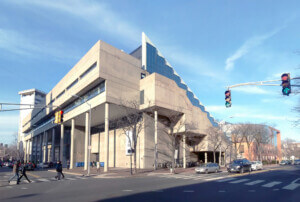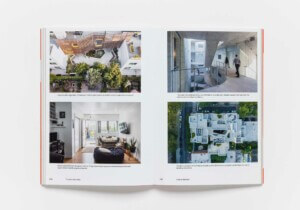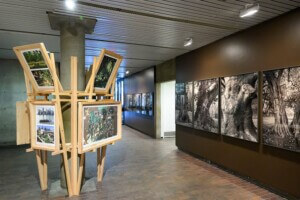Asensio_mah & Harvard’s Graduate School of Design’s moss-covered installation is architecture on the cellular level
When visitors stroll through Quebec’s Redford Gardens, the first of many large installations they come upon is Surface Deep, an undulating, moss-covered structure designed by international architecture firm asensio_mah in collaboration with students from Harvard’s Graduate School of Design. It was built last summer, but with this year’s Metis International Garden Festival, Surface Deep is once again getting major foot traffic in the most literal sense of the word. Surface Deep is a mountable, climbable series of snaking panels that invites visitors to explore it in its entirety, from its long, sweeping form to its small, mossy nooks.
The panels vary in height depending on their angle, but have a constant width of 0.5m. The plywood frame and the patterned overlays were made at the Harvard Graduate School of Design’s Fabrication Laboratory over a two-week period using CNC milling, robotic water jet cutting and welding. White celltech plastic trays were constructed to house the moss substrate, which were then fixed within the plywood frame and covered with panels. The parts were shipped to Quebec and assembled on site with steel anchor plates.
Once the team had an idea of the overall gesture of the installation, they worked with a local biologist, Suzanna Campeau at Bryophyta Technologies, to determine which species of mosses were best suited to the microclimates created by the varying orientations and lean of the individual panels. Some panels, for example, receive full sunlight while others are in constant shade. According to the students, “the first 11 units were made with Niphotrichum canescens (a sun-loving species), unit 12 is planted with Callicladium haldanianum while the other units remaining (13 to 22) were made with a mixture of Callicladium haldanianum and other shade-loving, forest species such as Pleurozium schreberii and Ptilium crista-castrensis.”
Campeau grew the moss on a geotextile, a permeable fabric often used with soil for erosion control or slope stabilization. The “moss textile” was then installed on a plywood substrate and into the panel system where it’s held in place by the webbed overlay. The team used the cellular structure of moss as their design inspiration for the web-like panel pattern, though they have practical applications as well. The panels help with water retention, keep the moss protected and actually provide it with some shade, albeit on the micro level. It requires watering, but the overall maintenance is quite low. And though Surface Deep is not considered permanent, the installation will be kept in the park for several years to come.










